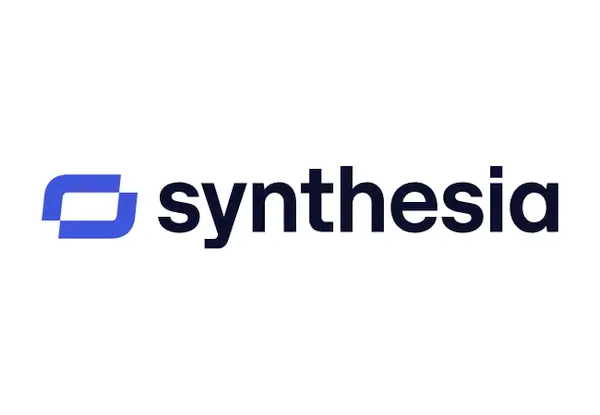Making great videos used to mean standing in front of a camera, using expensive equipment, and feeling uncomfortable. Not anymore! Now you can create amazing videos without showing your face at all.
In this guide, I’ll show you simple ways to make professional-looking videos that connect with your audience – all without needing to be on camera yourself.
First, Decide What Your Video is For
Before you start making your video, think about why you’re creating it. Is it to teach something? Sell a product? Welcome new team members? Your video’s purpose will help you decide how long it should be and what style to use.
Write your script in small chunks – just one main idea per scene. This makes your video easier to follow and gives viewers small breaks to understand each point.
Different videos need different formats:
- Training videos: Problem → Solution → Practice (keep these 3-5 minutes long)
- Marketing videos: Hook → Value → Call-to-Action (keep these 30-90 seconds)
- On boarding videos: Welcome → Important Information → Next Steps (keep these 2-3 minutes)
To save time, use AI tools like ChatGPT or Claude to help write your script. This can cut your writing time in half!
Use Templates or Start Fresh
Starting with a template is like using a recipe – it helps you create something good much faster. Templates give you professional layouts that are already proven to work well.
At Synthesia, we have over 60 ready-to-use video templates for many different needs – social media posts, training videos, product demos, and more. Each template has placeholder text and images you can easily replace with your own.
Templates are especially helpful when making several videos that need to look similar. For one-of-a-kind projects, starting from scratch gives you more freedom to be creative.
Write a Clear, Simple Script
Your script is the foundation of your video. Keep each scene’s script short – no more than 3-4 sentences per slide so viewers can easily follow along.
Use everyday language that sounds natural when spoken out loud. Try reading your script out loud before finalizing it to catch any awkward phrases.
In the Synthesia editor, you can paste your script into each scene and easily change the wording. This makes it simple to improve your script without starting over.
Here are some tips for writing good scripts:
- Keep sentences short: Try for 15 words or fewer
- Use active voice: Say “We analyzed the data” instead of “The data was analyzed”
- Talk directly to viewers: Use “you” to create a connection
- Include transition words: Help viewers follow your ideas with words like “first,” “next,” and “finally”
Choose an AI Person and Voice
Picking the right digital person (avatar) and voice helps viewers connect with your video. At Synthesia, we offer over 230 realistic-looking AI avatars with different looks and styles.
Select an avatar that matches your brand’s personality and your video’s purpose. For business training, choose professional-looking avatars. For marketing, pick avatars that look like your target audience.
The voice you choose is just as important. Think about the tone, speed, and emotion that best fits your message. Its provide realistic AI voices in more than 140 languages and accents.
Add Visuals and Sound
Visual elements transform simple videos into engaging content. Add your logo, brand colors, images, and video clips to strengthen your message.
Using consistent visuals makes your video look more professional. Choose a color scheme and fonts that match your brand style.
Background music adds feeling and helps keep viewers interested. Pick music that fits your content without being too loud or distracting.
Here are some tips for good visuals:
- Consistent branding: Use the same logo placement, colors, and fonts throughout
- Easy-to-read text: Keep on-screen text short with 30-40 characters per line
- Matching music: Choose tracks that fit the mood of your message
Create, Check, and Share Your Video
When you’re happy with your video, generate the final version. This process is much faster than traditional video production.
After creating your video, always watch it one more time to catch any problems. With Synthesia, making updates is easy – just edit your script or visuals and regenerate your video.
For the best results, optimize your video for each platform where you’ll share it. YouTube videos need good descriptions, while social media videos need eye-catching thumbnails.
Remember these final touches:
- Add captions: Make sure viewers can understand even without sound
- Include clear instructions: Tell viewers exactly what to do next
- Use the right format: 16:9 for YouTube, 9:16 for Stories, 1:1 for feed posts
Top Ways to Create Videos Without Showing Your Face
Here are four effective methods for making professional videos without being on camera:
1. Screen Recording with Narration
Screen recordings are perfect for tutorials, software demonstrations, and showing step-by-step processes. You simply capture your computer screen while adding your voice over it.
You can record your screen directly within Synthesia. Other popular tools include OBS Studio, Loom, and Camtasia. These programs let you record high-quality screen captures with your voice perfectly matched to what’s happening on screen.
Tips for better screen recordings:
- Use a good microphone: Clear audio makes a huge difference in quality
- Clean up your desktop: Remove distracting icons and notifications before recording
- Plan what you’ll say: Make notes of key points to avoid awkward pauses
2. Whiteboard and Animated Explainers
Whiteboard animations and explainer videos use drawings and animations to explain complex ideas. They work especially well for educational content and abstract concepts.
Tools like Doodly, VideoScribe, and Powtoon offer templates and drag-and-drop features that are easy to use even if you’re not a designer.
The key to good whiteboard videos is telling a clear story. Start by presenting a problem, then introduce key ideas visually, and finish with a solution.
3. Using Stock Footage or B-Roll
Synthesia offers many stock video clips that let you create story-based videos by combining pre-recorded footage with your voice over. This approach works well for marketing videos, social media content, and storytelling.
You can now also use AI-generated background videos thanks to Synthesia’s VEO 3 integration, which creates custom video scenes based on your needs.
4. AI Video Generators and Avatars
AI video generators like Synthesia have changed how we create videos without appearing on camera. Our platforms use text-to-video technology to create professional videos in minutes.
We offer AI avatars that deliver your script naturally. This approach can create training videos in multiple languages, saving thousands in production costs.
How to Keep Viewers Watching Without a Real Person
Keeping viewers engaged without a human presenter requires some special techniques. Just because there’s no real face doesn’t mean your video should feel impersonal.
Changing the pace is important. Try varying your scene length and transition style to create visual rhythm. Aim for scene changes every 8-10 seconds for marketing content and 15-20 seconds for educational videos.
A strong story structure becomes even more important without a presenter. Create a clear beginning (hook), middle (main content), and end (call to action).
Here are ways to boost engagement:
- Visual variety: Change backgrounds, graphics, and elements regularly
- Voice expression: Use expressive voice overs with natural ups and downs
- Interactive elements: Add clickable parts or quizzes to increase participation
- Clear next steps: Guide viewers on exactly what to do after watching
Tips for Specific Types of Videos
1. Training or Education Videos
Educational videos work best with a clear structure: introduction, key points, and summary. This helps viewers remember the information better.
Include interactive elements like quizzes or choose-your-own-path scenarios. These encourage active participation rather than passive watching.
Using AI avatars for training offers special benefits for global teams. You can deliver the same training in multiple languages without recording separate videos.
2. Marketing or Product Demo Videos
Marketing videos need to grab attention quickly. Try using templates designed specifically for platforms like YouTube Shorts or LinkedIn.
Combine avatar scenes with product screenshots and background footage to create dynamic marketing videos. This mixed approach works especially well for product demonstrations.



1 thought on “How to Make Professional Videos Without Being on Camera Using Synthesia”